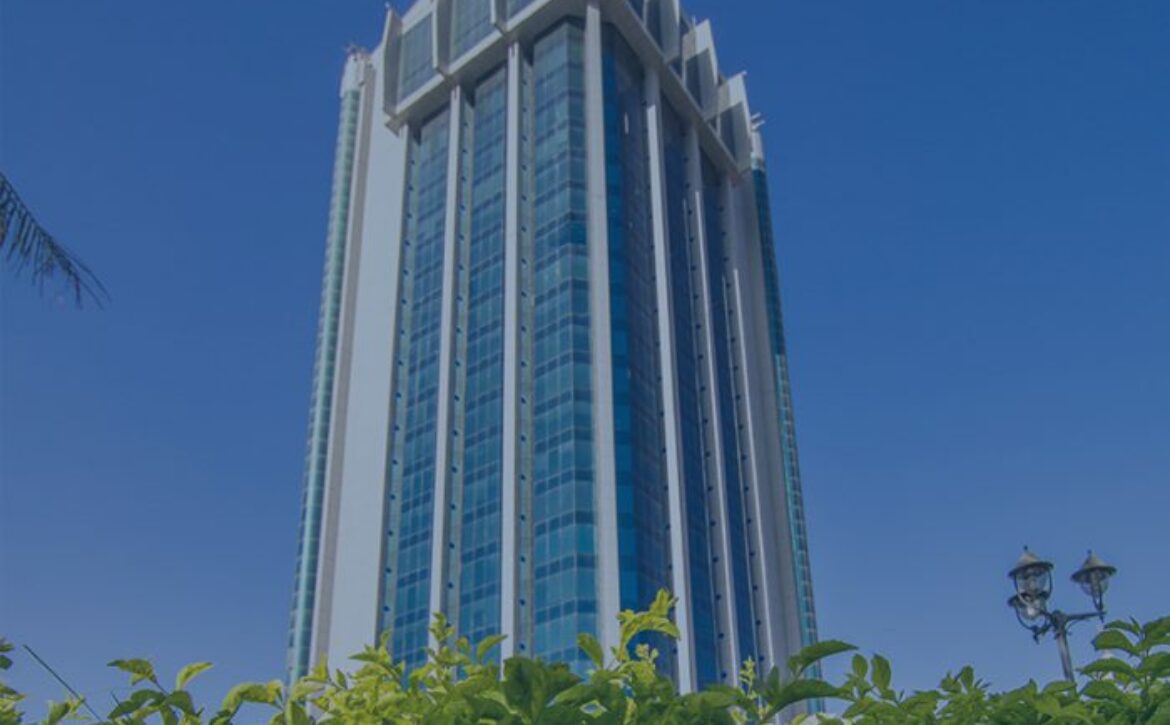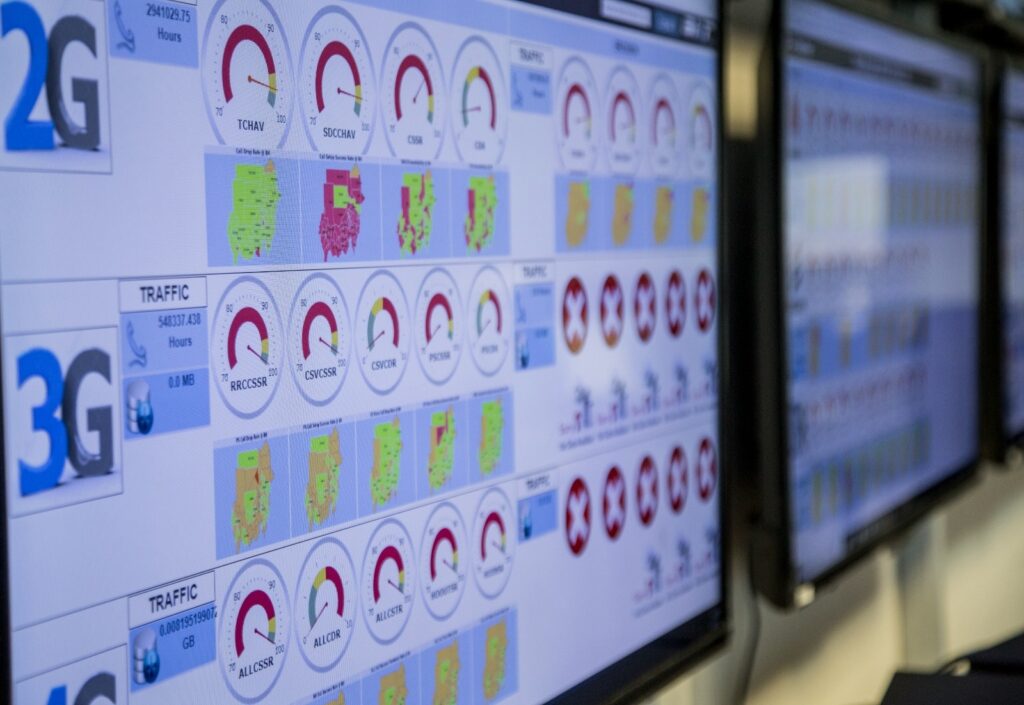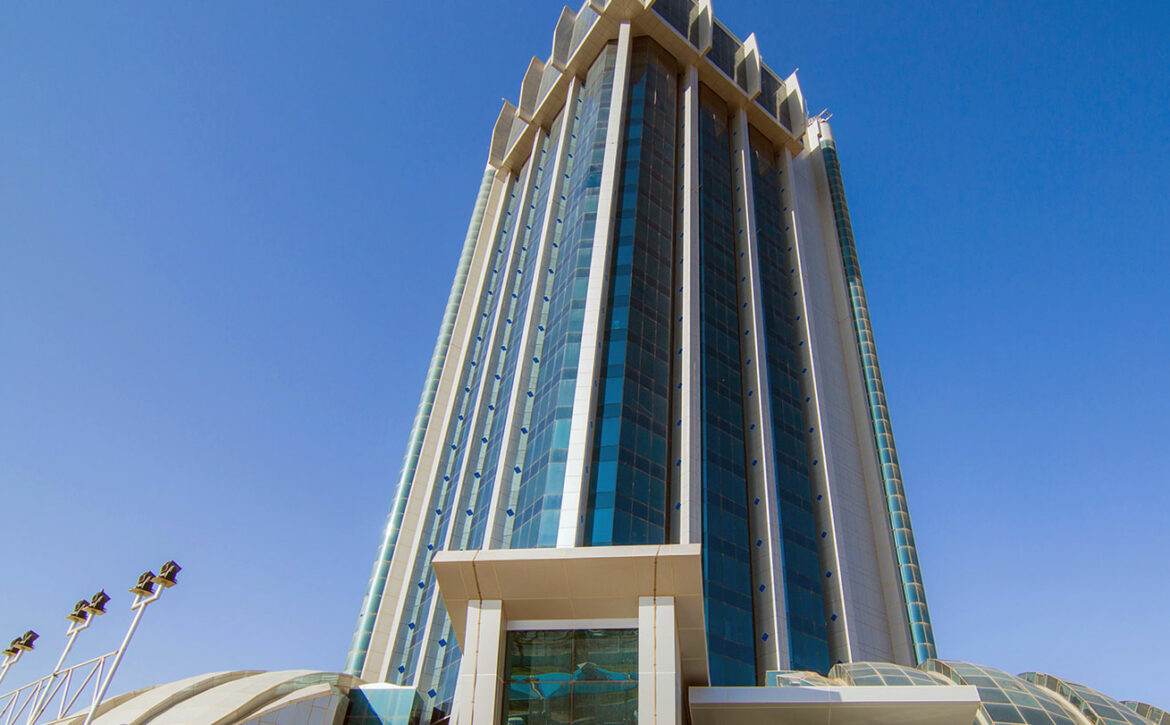تجديد رخصة مراكز الخدمات (Call Centers) + الرسائل القصيرة
Licenses
Value added services licenses

الوثائق و المستندات
- الطلب معنون للسيد مدير عام الجهاز تنظيم الإتصالات والبريد .
- استمارة المعلومات مكتملة البيانات
- صورة من الرخصة المنتهية .

الاجراءات المتبعة
- تقديم طلب معنون للمدير العام .
- ملء استمارة المعلومات الخاصة بالخدمة المراد التجديد لها.
- إستخراج المطالبة المالية وتوجيه العميل بدفع رسوم التجديد.
- إستلام الإيصال وإستخراج خطاب يوضح فترة الترخيص والخدمة المرخص لها والرسوم المدفوعة ,مرفق معه الإيصال .
- تسلم الرخصة للعميل ويوقع بالإستلام .

الرسوم
حسب لائحة الرسوم المجازه

زمن تقديم الخدمة
- 7 أيام عمل
تجديد رخصة مراكز الخدمات (Call Centers) + الرسائل القصيرة

الوثائق و المستندات
- الطلب معنون للسيد مدير عام الجهاز تنظيم الإتصالات والبريد .
- استمارة المعلومات مكتملة البيانات
- صورة من الرخصة المنتهية .

الاجراءات المتبعة
- تقديم طلب معنون للمدير العام .
- ملء استمارة المعلومات الخاصة بالخدمة المراد التجديد لها.
- إستخراج المطالبة المالية وتوجيه العميل بدفع رسوم التجديد.
- إستلام الإيصال وإستخراج خطاب يوضح فترة الترخيص والخدمة المرخص لها والرسوم المدفوعة ,مرفق معه الإيصال .
- تسلم الرخصة للعميل ويوقع بالإستلام .

الرسوم
حسب لائحة الرسوم المجازه

زمن تقديم الخدمة
- 7 أيام عمل
- الطلب معنون للسيد مدير عام الجهاز تنظيم الإتصالات والبريد .
- استمارة المعلومات مكتملة البيانات
- صورة من الرخصة المنتهية .
الاجراءات المتبعة
- تقديم طلب معنون للمدير العام .
- ملء استمارة المعلومات الخاصة بالخدمة المراد التجديد لها.
- إستخراج المطالبة المالية وتوجيه العميل بدفع رسوم التجديد.
- إستلام الإيصال وإستخراج خطاب يوضح فترة الترخيص والخدمة المرخص لها والرسوم المدفوعة ,مرفق معه الإيصال .
- تسلم الرخصة للعميل ويوقع بالإستلام .
الرسوم
750,000

زمن تقديم الخدمة
- 7 أيام عمل
الوثائق و المستندات
- دراسة فنية .
- خلو طرف ضريبي .
- صورة من السجل التجاري
- شهادة مقدرة مالية
- صورة من عقد التأسيس.
الاجراءات المتبعة
- تقديم طلب معنون للمدير العام لإستخراج رخصة مصحوبة بالدراسة (أصل وصورتين) المعدة وفق دليل الترخيص .
- بعد الموافقة علي الطلب يتم دفع رسوم الدراسة والترخيص.
- إستخراج المطالبة برسوم الرخصة وذلك بالرجوع إلي اللائحة حسب نوع الخدمة .
- بعد أن يقوم العميل بدفع رسوم الترخيص يتم التصديق باستخراج الرخصة حسب الشروط المحددة .
- يسلم العميل الرخصة ويوقع بالإستلام .
الرسوم
- 35,000
زمن تقديم الخدمة
- 15 يوم عمل
- الطلب معنون للسيد مدير عام الجهاز تنظيم الإتصالات والبريد .
- استمارة المعلومات مكتملة البيانات
- صورة من الرخصة المنتهية .
الاجراءات المتبعة
- تقديم طلب معنون للمدير العام .
- ملء استمارة المعلومات الخاصة بالخدمة المراد التجديد لها.
- إستخراج المطالبة المالية وتوجيه العميل بدفع رسوم التجديد.
- إستلام الإيصال وإستخراج خطاب يوضح فترة الترخيص والخدمة المرخص لها والرسوم المدفوعة ,مرفق معه الإيصال .
- تسلم الرخصة للعميل ويوقع بالإستلام .
15,000
زمن تقديم الخدمة
- 7 أيام عمل
Equipment license

الوثائق و المستندات
- طلب تجديد ترخيص
- صورة من الرخصة السابقة
- في حالة توقف الطائرة أو الباخرة لاكثر من سنة احضار شهادة من الطيران المدني أو هيئة المواني البحرية تفيد بذلك
- قائمة بالاجهزة الموجودة بالطائرة او الباخرة في حالة تحديث الاجهزة

الاجراءات المتبعة
- تقديم طلب لجهاز تنظيم الإتصالات والبريد لتجديدالرخصة مرفق معه صورة من الرخصة السابقة
- استخراج المطالبة المالية
- استخراج الرخصة
- أرشفة المستندات

الرسوم
حسب لائحة الرسوم المجازه

زمن تقديم الخدمة
- اسبوع
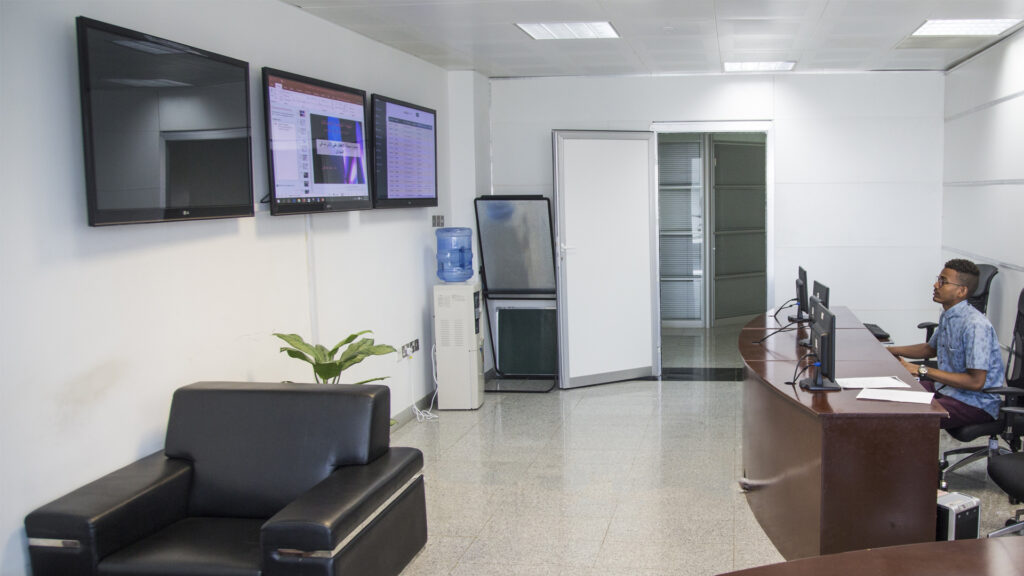
Sudanese Center for Information Security
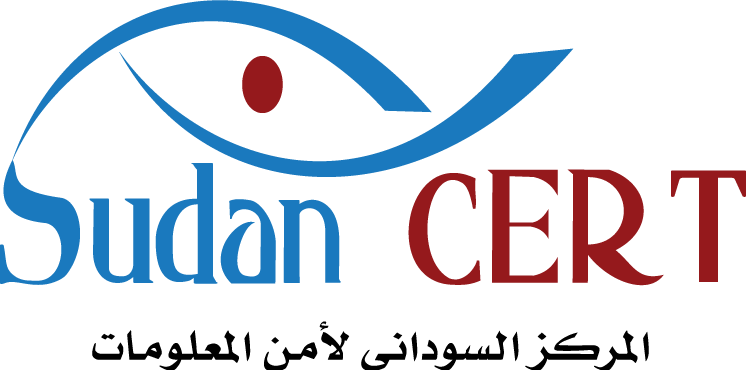
المركز السوداني لأمن العلومات (Sudan CERT) :
تم انشاء المركز السوداني لأمن المعلومات (Sudan CERT) في يناير من العام 2010 بمبادرة كريمة من جهاز تنظيم الإتصالات البريد وهو يمثل مقدرة وطنية المنوط بها رفع الكفاءة الأمنية في مجال أمن المعلومات لجميع المرافق الوطنية التي تستخدم تكنلوجيا الاتصالات والمعلومات ويقوم بدور المستجيب الأول لحوادث أمن المعلومات ويمثل الجهة الاستشارية للمواطن والشركات في أمن المعلومات.
تضم عضوية المركز تضم الجهات ذات الصلة مثل شركات الاتصالات – جهاز الأمن الوطني – شرطة ونيابة جرائم المعلوماتية – المركز القومي للمعلومات ومركز النيل للابحاث والشبكة السودانية للجامعات وجمعية الانترنت السودانية.
رؤية المركز:
” من أجل مجتمع الكتروني آمن“
رسالة المركز:
- حماية مستخدمي الانترنت وتقنية المعلومات داخل الفضاء الالكتروني السوداني.
- نشر ثقافة الاستخدام الآمن للانترنت ورفع الوعي لدى مستخدم الانترنت.
- الاستجابة الفورية للحوادث الالكترونية ومساعدة الجهات العدلية في تتبع الجريمة الالكترونية.
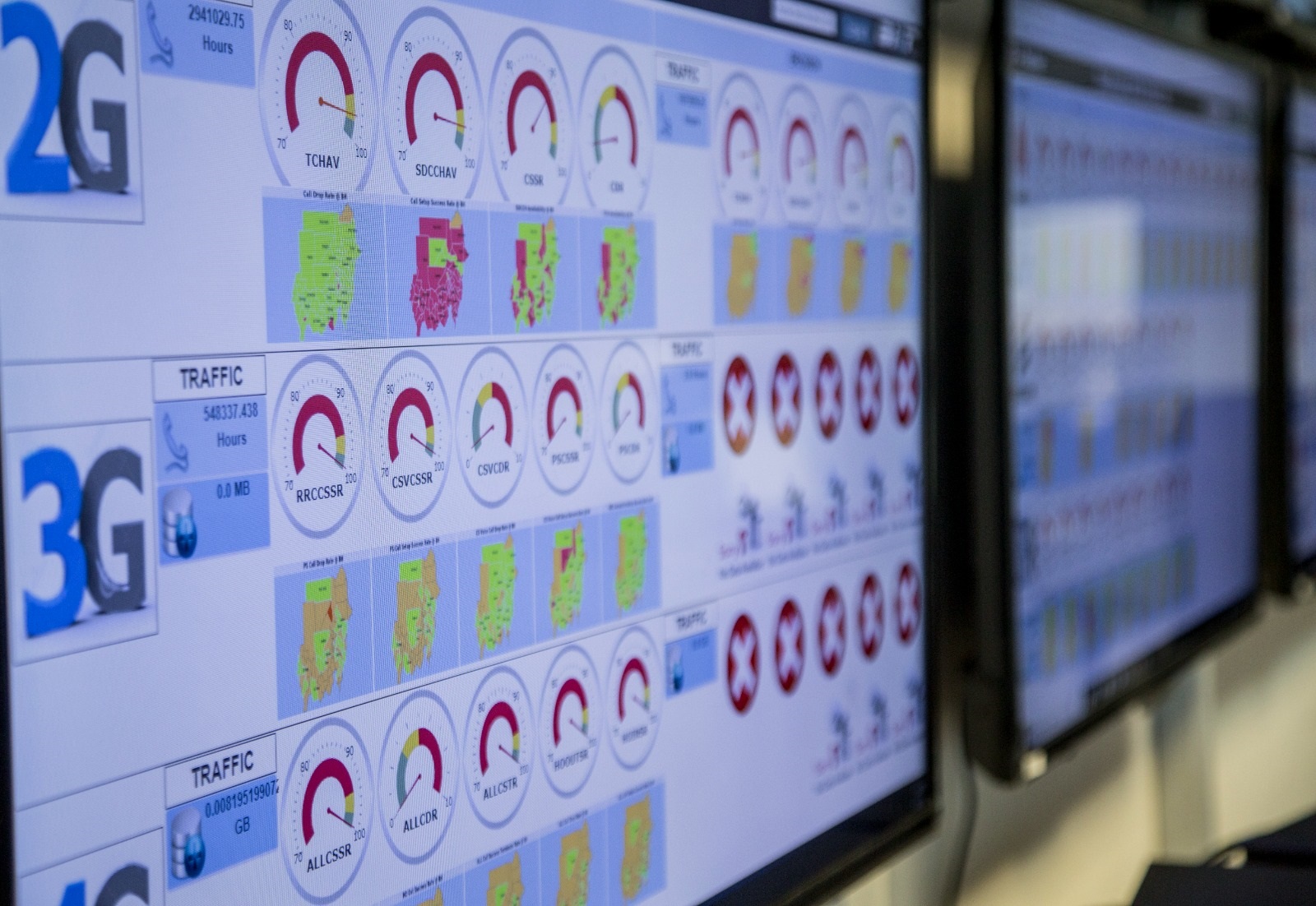
أبرز مهام وواجبات المركز:
- العمل كآلية انذار مبكر العمل كنقطة اتصال موثوق بها
- رفع الوعي لدى المواطن السوداني في مجال أمن المعلومات
- نشر التعليم والمعرفة والتدريب في أمن المعلومات
- مساعدة الجهات القانونية في الأدلة الالكترونية وتتبع الجريمة الالكترونية
- تحليل واختبار وتتبع الثغرات والمهددات
- تقديم الاستشارة الفنية في مجال حماية الشبكات
- مساعدة المؤسسات والشركات الوطنية على حماية شبكاتها
- الاستجابة لحوادث الحاسب الآلي
- رصد ومكافحة الرسائل الاقتحامية
- نشر أفضل الممارسات والتجارب في مجال أمن المعلومات
- حماية البنية الأساسية للاتصالات والمعلومات بالبلاد
- التنسيق مع الجهات الداخلية والخارجية في مكافحة الجريمة الالكترونية
لمزيد من المعلومات الرجاء زيارة الموقع الالكتروني للمركز:
CERT.SD
Functions and Authorities
- حماية إلتزامات الدولة ومتطلباتها فى مجــــــــــال الأمن والدفــــــــــاع الوطنــــــــى والسياسات القومية والإقليمية والدولية بالتنسيق مع السلطات المختصة والمرخص لهم
- وضع موجهات وخطط وبرامج ونظم تقديم خدمات الاتصالات والبريد على المستوى القومي، وذلك مع مراعاة التنمية المتوازنة وخدمة الأهداف القومية والاجتماعية وتنفيذ سياسات الدولة المتعلقة بالاتصالات والبريد
- وضع نظم تخطيط وإدارة وتخصيص وترخيص ومراقبة استخدام الطيف الترددي وتشغيل واستخدام الأجهزة اللاسلكية ومحطات البث مع مراعاة الجوانب الأمنية المتعلقة بها بالتنسيق مع الجهات ذات الصلة
- وضع المواصفات للنظم والأجهزة والمواد المستخدمة في مجال خدمات الاتصالات والبريد وإرساء أساليب القياس والمطابقة والمراقبة اللازمة لها بالتنسيق مع الجهات ذات الصلة
- وضع خطة الترقيم الوطنية وتنظيمها وإدارتها
- وضع نظام العناوين البريدية وتنظيمه وإدارته
- ضمان وصول خدمات الاتصالات والبريد إلى جميع مناطق التوسع العمراني والنشاط الاقتصادي والمناطق الحضرية والريفية والنائية بأسعار ميسرة وتقنيات مواكبة وجودة عالية
- ضمان حماية البريد وسريته
- ضمان التنظيم والاستفادة من البيانات الناتجة عن حركة اتصالات المشتركين وفقاً لما تحدده اللوائح
- ضمان الالتزام بالشفافية والعدالة بين المرخص لهم
- إتخاذ التدابير والإجراءات اللازمة للحد من السلوك غير التنافسى للمرخص لهم وفقاً لما تحدده اللوائح
- تنظيم أسماء النطاقات في السودان ووضع النظم الخاصة باستخدامات الإنترنت وتطبيقاته وحماية سرية المعلومات والحد من الاستخدامات المنافية للمعتقدات والقيم والأخلاق والموروثات
- التنسيق مع الجهات المختصة فيما يتعلق باستيراد وتجميع وتصنيع أجهزة ومعدات ومواد ونظم الاتصالات ومنح وإعتماد الموافقات النوعية لتلك الأجهزة والمعدات والمواد
- إنشاء المراكز والوحدات اللازمة لتحقيق أغراضه
- تمثيل الدولة في المحافل الإقليمية والدولية الخاصة بالإتصالات والبريد
- التفتيش والقياس الفنى والمراقبة والضبط والإشراف على كافة أنشطة الاتصالات وخدمات البريد وفقاً للأسس والمعايير التي تحددها اللوائح
- إصدار الضوابط والموجهات لضمان المعايير البيئية والصحية في كل ما يتعلق بالإتصالات والبريد بما فى ذلك النفايات الإلكترونية والإشعاعات الكهرومغنطيسية ، وانبعاثات الغازات الضارة بالتنسيق مع الجهات ذات الصلة
- إجازة التصاميم والمواصفات الخاصة بطوابع البريد والموافقة على إصدارها
- تملك العقارات والمنقولات والتصرف فيها وفقاً لأحكام القانون
- إبرام العقود والإتفاقيات ذات الصلة باختصاصاته وسلطاته وفقاً للقوانين واللوائح المنظمة لذلك
- إستخدام من يرى ضرورة إستخدامهم من العاملين لتمكينه من الإضطلاع بمهامه، وذلك وفقاً لأحكام القوانين ذات الصلة
يكون للجهاز الاغراض الاتية :
- تنظيم وتطوير الاتصالات والبريد لمواكبة التطور في المجال
- تشجيع وحماية الإستثمار في مجال خدمات وتطبيقات الإتصالات والبريد وتنظيم التنافس الحر وتوفير البيئة المناسبة لنمو القطاع واعتباره شأناً قومياً استراتيجياً
- تأمين إتاحة الربط البينى والتشغيل المتبادل فيما بين الشبكات المرخص بها
- تنمية القدرات البشرية ورفع الوعي وتعزيز الثقة في مجال الاتصالات والبريد
- تعزيز دور السودان في مجال الاتصالات والبريد على الصعيدين الإقليمي والدولي
- ضمان وصول خدمات الاتصالات والبريد إلى جميع مناطق التوسع العمراني والنشاط الإقتصادي والمناطق الحضرية والريفية والنائية
- ضمان الإستخدام الأمثل للطيف الترددي والترقيم والعناوين البريدية وأي مصادر نادرة أخري ذات صلة وتحقيق الحد الأقصى لاستغلالها
- ضمان الالتزام بأحكام الاتفاقيات الإقليمية والدولية التى يصادق عليها السودان والمتعلقة بالاتصالات أو البريد
- ضمان تأمين المخارج العالمية والكوابل البحرية
- حماية الأمن القومي والمصالح العليا للسودان في مجال الاتصالات والبريد وتكنولوجيا المعلومات
Frequencies
- To abide by the conditions of the license, especially with regard to the following: –
a. Frequencies and reciprocating beams assigned to it.
B. Type and specifications of transmitters and receivers.
T. The boundaries of the geographical area in which he is permitted to work.
D. Efficiency of the people operating the system.
C. Not to interfere with other systems - It shall abide by international agreements and the provisions and regulations of the International Telecommunications Union, especially with regard to frequencies with international uses.
- The device is informed of any change in the wireless systems it is authorized to operate or its specifications.
- Provides required information, protection from interference, safety standards and specifications.
- Uses modern technologies that help in the optimal use of the frequency spectrum, whenever possible.
- He shall not use the frequency assigned to him for a matter that conflicts with the public interest and other than the purpose for which it is intended.
- Provides the necessary hardware to ensure compatibility with other licensed networks.
- The device notifies when stopping work at the assigned frequencies.
- He shall not dispose of the equipment or frequencies by trading in them or transferring their possession to any other party without the approval of the Director General in writing.
- Delivers the license certificate upon revocation of the license.
- It is not permitted to use frequencies by another party.
- He does not change the device’s locations without referring to the authority.
- It does not cause any harm to others.
- Pay the scheduled annual allocation and renewal fee on time.
The validity period of the Public Telecommunications Network Frequency and Bandwidth License
The license period with frequencies or frequency bands for any party is valid for a year after paying the prescribed (fee).
Notwithstanding the provisions of Clause (1) of the General Telecommunications s Regulations, the Council may, upon the recommendation of the Director General, increase the period as it deems appropriate.
- To abide by the conditions of the license, especially with regard to the following: –
- He shall comply with the conditions of the license, especially with regard to the following:
a. Frequencies and reciprocating beams assigned to it.
B. Hardware type and specifications.
T. The boundaries of the geographical area and the locations in which he is authorized to work.
D. The efficiency of the people operating the network.
C. Not to interfere with other systems. - The device is notified of any change in the specifications and locations of the network devices authorized to operate.
- It uses modern technologies that help in making the best use of the frequency spectrum.
- Does not provide commercial services.
- Provides the general manager with any reports and any information requested about the network at any time.
- hands over devices to the authority or destroys them under the supervision of the device in case they are not valid.
- It does not cause harm to others when implementing the network.
- The general manager is notified when work stops on the assigned frequencies.
- Place the license certificate in a prominent place.
- The devices are used for the purpose for which the license was granted.
- The device shall be provided with the names and qualifications of the wireless workers for authorization.
- The licensee issues cards for workers authorized to use mobile devices that contain the following data:
a. The name and address of the licensee
B. Device username
C. License number and date - The outside workshop is provided with the following when maintaining or repairing a wireless device:
a. Device type and specifications.
B. The name and address of the licensee
C. License number and date - He shall not add any wireless device or its accessories except after obtaining the approval of the General Manager
The validity period of the license for frequencies and bandwidths for a private Telecommunications s network
- The license for frequencies or a bundle of frequencies for a specific party is valid for one year or part of the year after paying the prescribed fee.
- Notwithstanding the provisions of Clause (1) of the General Regulations, the Board may, upon the recommendation of the Director General, approve an increase in the period as it deems appropriate
- He shall comply with the conditions of the license, especially with regard to the following:
Licensing and allocating public network frequencies
- It is done through bids and according to a licensing agreement, as for the addition, it is according to what is specified by the regulations
- Submit an application to the Director General of the Telecommunications s and Post Regulatory Authority on a signed, sealed, letter of paper containing a full description of the network, details of the devices and their technical characteristics, sites of use, frequency range and the purpose of their use,
- Fill in the format prepared for this purpose.
- Submission of the application accompanied by the formatting by a person authorized by the party requesting the license.
- Receive the certification after completing the procedures from the Authority according to the specified time.
Licensing of radio frequencies and devices
- Submit a request to the Director General of the Telecommunications s and Post Regulatory Authority on a sealed, signed, and signed paper containing a full description of the network, equipment details, technical characteristics, sites of use, frequency range and purpose of use.
- Fill in the format prepared for this purpose.
- Submitting the application accompanied by the forms and the required certificates according to it (registration certificate + tax-clearance certificate + financial ability certificate) by a person authorized by the party requesting the license.
- Receive the certification after completing the procedures from the Authority according to the specified time.
- When the devices are imported, the devices are examined to ensure that they comply with the certification and technical specifications.
- The license is valid for one year and renewed annually
Renewal of the license for radio frequencies and devices
- Submitting a license renewal request one month before the license’s validity period expires.
- Receipt of the financial claim for the fees due in the first month of the beginning of each year.
- Payment of fees.
- Receive the license certificate .
Cancel the license for radio frequencies and devices
- Submit an application to cancel the license of frequencies and wireless devices to the Director General of the Telecommunications s and Postal Regulatory Authority on a sealed, sealed paper signed by a person authorized by the requesting party.
- Handing over the devices to the authority; Re-confiscate it and show the supporting documents or waive them after the approval of the Authority for a body that has the approval of the Authority .
- Payment of fees until the date of cancellation.
- Handing over the license certificate.
- Receive a clearance certificate.
Replacement of wireless devices
- Submit a request to the Director General of the Telecommunications s and Postal Regulatory Authority
- on a letterhead, stamped and signed with the reason for replacement
- by an authorized person.
- The devices to be replaced shall be handed over to the authority or re-issued, and the supporting documents shall be presented.
- Receive an approval certificate from the device.
Change Usage site
- Submit an application to the Director General of the Authority , on a paper mirrored, sealed and signed, indicating the type of device, the location it was transferred from and transferred to, and the reason.
- The application is submitted to the authority by an authorized person.
- An approval certificate is received from the device.
Re-export devices
- In the event that the equipment does not comply with the technical specifications, it is not permitted to release it, and customs are addressed to re-export it
- In the event of a request to re-seize them for the purpose of maintenance, customs shall be addressed after inspecting the devices by the device.
- In the event of a request to be re-issued after canceling the license, customs will be addressed after inspecting the devices with the device.
aircraft and ships licensing
- Submit an application to the Director General of the Telecommunications s and Postal Regulatory Authority on a moored, sealed, signed paper with attaching the aircraft registration certificate from the Civil Aviation Authority + the number, types and specifications of the devices inside the plane or the ship.
- An expired license shall be attached to the application in case of renewal
- License fee paid.
- Obtain the license certificate.
Licensing of broadcast stations and devices
- Addressing the Competent Minister (Minister of Information and Telecommunications s) for content licensing purposes.
- Bring the approval of the concerned minister.
- Fill in the technical and administrative forms.
- Frequency allocating.
- Payment of fees.
- Receive the license certificate.
Licensing of devices and amateur frequencies
- Submit a request to the Director General of the Telecommunications s and Post Regulatory Authority, containing a full description of the network, details of the devices, their technical characteristics, sites of use, frequency range, and purpose of use.
- Fill in the format prepared for this purpose.
- Submit the application accompanied by the forms and documents required for the license (ID certificate and the expired license in case of renewal.
- Receive the certification after completing the procedures from the Authority according to the specified time.
- When the devices are imported, the devices are examined to ensure that they comply with the certification and technical specifications.
- The license is valid for one year and renewed annually
- Receive requests and receive responses through the customer services office
- Incomplete applications will not be received
Planned ranges
- Wireless devices for private use for all purposes on the High Frequency band (3-30 MHz).
- Wireless devices for private use for all purposes on very High Frequency range (30 – 300 MHz).
- Radio equipment for the purposes of air and maritime navigation, devices on aircraft, ships, coastal stations and airports in accordance with the International Radio Regulations.
- Public wireless communications networks, including mobile phone networks on the bands 2000/1800/900 MHz
- Broadband networks on the 3.5 / 2.5 GHz bands and the shared frequencies on the 2.4 / 5.8 GHz bands.
- Code Division Multiple Access networks on the (800/450) MHz band.
- Macro-wave networks on the bands 28/23/18/15/13/10 / GHz in accordance with the recommendations of the International Telecommunications Union (ITU-R) and “satellite” devices in accordance with the International Radio Regulations.
- Private wireless communications networks on bands appropriate for the service and not in conflict with public Telecommunications s networks.
Numbering
Plan objectives :
- Expanding the numbering capacities to remove bottlenecks in the capacity of the mobile operators in the numbering plan currently in effect.
- Providing access to new operators in the field of mobile and fixed phones.
- Allocate codes to meet the needs of personal numbers.
- Understanding any new future technologies.
- Abolishing the geographic numbering system for fixed telephones.
- Maintaining the current subscriber numbers without any modification.
Allocate numbering groups to accommodate new services and Allocate toll-free numbers
Plan principles :
- Increase the length of the numbering from 9 numbers to 10 numbers by adding a number after the international key (249) representing a symbol indicating the type of service and referred to as (T).
- Combining the codes used in the previous plan to determine the type of service (ST) and the operator code (OP) into a single two-digit key symbolizing the operator (P). This ensures the possibility of accommodating a large number of operators in each service type and also maintains the numbering capacities assigned in each range My number is 10,000,000 numbers.
- Increasing the length of the numbering in this way maintains the same numbering of the subscriber.
The proposed plan allows for more than one numbering range for each of the existing operators.



